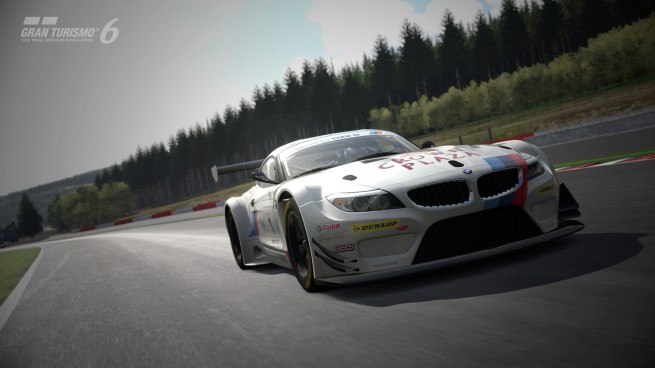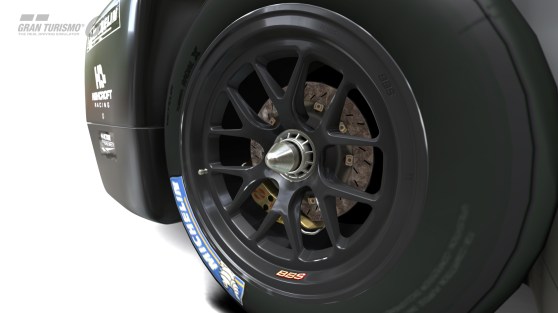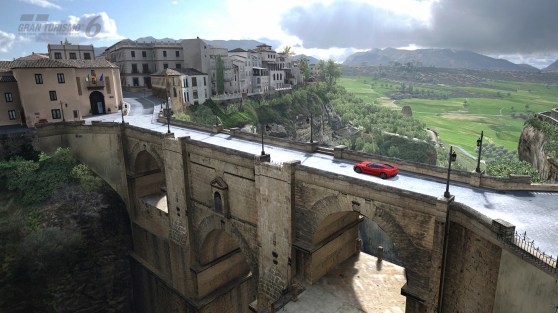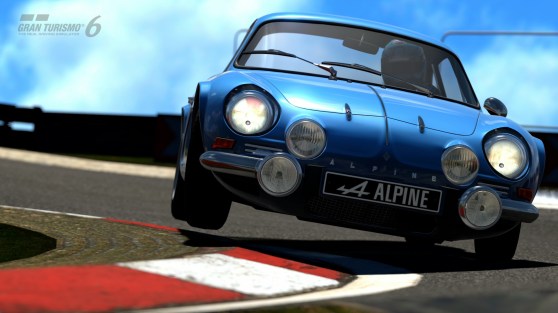Gran Turismo developer Polyphony Digital has been steadily bridging the gap between what fans of racing games could consider simulation and what’s in an undergraduate engineering course. Gran Turismo 6 blurs the distinction even further by bringing both sides — the game maker and the car maker — together, and sooner than ever before.
I spoke over the phone with Taku Imasaki, the North American producer for Polyphony Digital, and asked him about the latest details on these new features as Grand Turismo 6 prepares for its Dec. 6 debut for the PlayStation 3.
Real-world feedback starts earlier
Gran Turismo’s development has always relied on working relationships with automotive engineers, but Polyphony Digital has brought its various partners earlier and deeper into the making of GT6. Companies like KW Automotive (which makes suspensions and other parts for race cars) and Yokohama Rubber (the tire company) have contributed their expertise to the finished car models and physics before, but with GT6, these companies got involved with development at a much earlier stage of development than previously.
“[We had] always been on a verbal level. These companies would come to [series creator and producer Kazunori Yamauchi’s] office voicing opinions,” said Imasaki of the relationship prior to Gran Turismo 6.
Yamauchi actually races cars in real life, so companies like Yokohama and KW frequently show up when he’s on the track, taking telemetry (remotely measured) racing data straight from his runs. During GT6’s production, Yokohama’s and KW’s feedback was now being factored in from the initial programming stage. Polyphony Digital hopes the extra input improves the tires and suspension models of the 1,200 cars (you can find the full list here, beginning with the 124 cars new to GT6.) And with a new rendering and physics engine at play, the racer has much more room for more precise data.
A new ‘concept’
When your sim gets to this degree of detail on today’s cars, sometimes the only way to take the next step is to help create the cars of the future. For GT6’s producers, this means expanding the idea of the concept car by helping to make some themselves. Dubbed Vision Grand Turismo, the program pairs Sony and Polyphony Digital with 18 companies, including Volkswagen, Honda, Nike, and Jordan. Beginning around a year ago, Imasaki referred to the relationship as “a collaborative effort between game and auto makers.”
Polyphony reps have been integrating themselves into the production cycles of over a dozen different automobile and part manufacturers. Depending on the specific manufacturer (Imasaki would not elaborate on particular in-development concepts), this could mean realizing these concept cars in the GT6 engine as early as the preliminary sketches to as late as the test-run stage. Many of the in-game concept cars are planned to debut at the same as the real models at various auto shows around the world.
The cars that result from this program, be they road-tested or not, will be made available during the planned six months of DLC following GT6’s launch. I couldn’t confirm a pricing structure for this downloadable content, but a similar long-term rollout for Gran Turismo 5 had most individual cars priced at $1, with a few “Prototype” designs offered for free. And while a 5-star system with a comment box was deemed “too simple” for the purposes of player feedback, Imasaki confirmed that both Polphony and the car maker will monitor forum conversations and metric data for each new vehicle.
“We will be monitoring the community very carefully along with the car manufacturers,” Imasaki said. “Auto manufacturing is looking forward to hearing from customers.” This means that various metric data, from number of times people who play each car to the regularity of mentions on official forums, will be Vision Gran Turismo’s chief considerations when it comes to their concept cars.
A fistful of data
In addition to it collaborations as part of Vision Gran Turismo, Polyphony Digital has entered into a special partnership with Toyota for that company’s Scion FR-S model. The 2012 model was free DLC in Gran Turismo 5, but the new car will play a major role in GT6’s GPS Data Visualizer. Going to any of the real tracks featured in the game (including the seven new ones offered at launch) and plugging the USB stick into an actual Scion FR-S car will enable you to upload all of your meta data to your PS3, along with a real-time replay of your time behind the wheel. You’ll be able to see everything that would come following a run around the virtual track, but having made the turns and switched gears yourself.
Imasaki confirms that the feature is set to launch in Japan sometime next year, with a Western release currently “depend[ing] on Toyota.” It’s a steep cost of entry, being exclusive to the Scion FR-S and the game’s featured race tracks, but it’s the closest players can get to an actual Gran Turismo race without investing seriously in a new, dangerous career.
So if you can find yourself near Mount Panorama in a Toyota Scion FR-S, you may be able to skip the avatar process altogether.
VentureBeat's mission is to be a digital town square for technical decision-makers to gain knowledge about transformative enterprise technology and transact. Learn More
















